
Check digit:
- The digits in the number are added together, and the unit digit of the result is called as check digit, which is used for error detection.
- The unit’s digit of that sum is stored with the number.
- The additional digit is used along with the check digit to find out the transposition error, and it can be found out by the sum of even digits or odd digits in the number.
For example,
Consider the number 3422.
Count the numbers from left to right; it produces the sum of the digits as 11. It is stored as 3422-15.
- Here, “1” is the unit’s digit of the sum of all the digits, which is called as check bit.
- “5” is the unit’s digit of the sum of the first and third digits (3+2 =5), which is the additional digit used along with the check digit.
- While storing the above number 3422-15, if “2” is corrupted by “4” and “4” is corrupted by “2”, it leads to a transposition error.
- So, the number is received as 3242-15.
- By adding the number, it produces the check digit as “1” and it produces the additional digit as “7”.
- But the received additional digit is “5”. Hence, it is clear that the received number is corrupted.
- So, the number is received as 3242-15.
Explanation of Solution
a.
Find the additional digit using the sum of odd digits for “1066” numbers:
The additional digit (using the sum of odd digits) for the number 1066 can be determined by the following steps:
Check digit:
- Step 1: Count the given number from left to right.
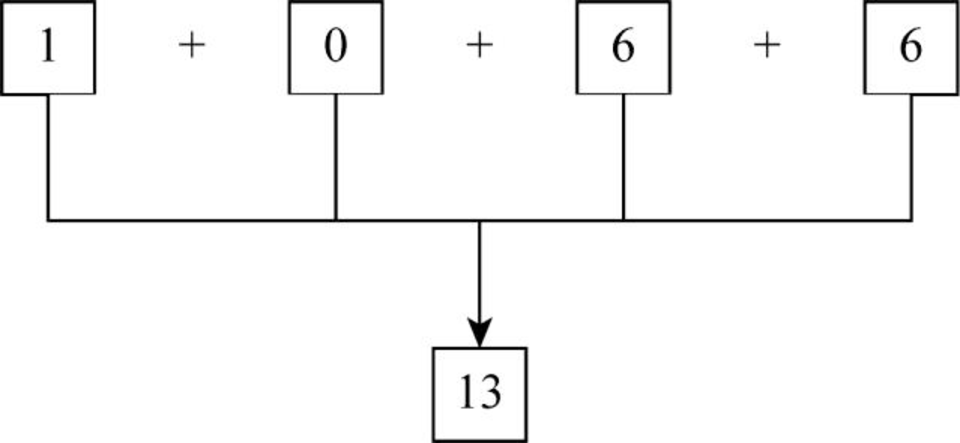
- Step 2: From the above diagram, the sum of digits produces the result as 13.
- Step 3: The unit’s place in the sum represents the check digit. Thus, “3” is in the unit’s place.
- Step 4: Therefore, check digit for the number 1066 is 3.
Additional digit:
- Step 1: In the given number 1066, take the numbers from the odd position from left to right.
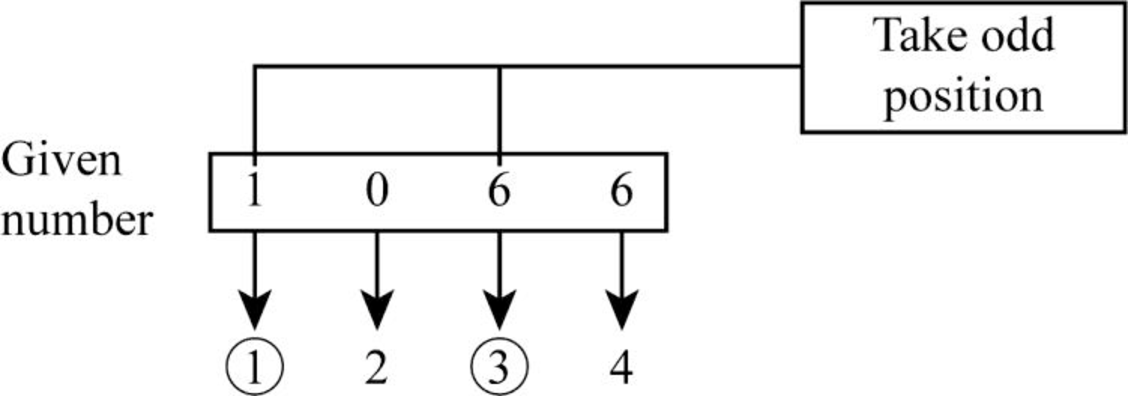
- Step 2: From the above diagram, it is clear that the number “1” on first position and the number “6” on third position are the odd position numbers.
- Step 3: The sum of digits produces the result as “7” (1+6 = 7).
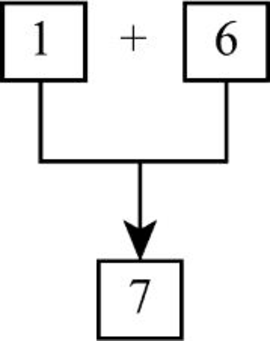
- Step 4: Hence, “7” in the unit’s place is the additional digit used along with the check digit.
Therefore, additional digit used along with the check digit “3” for the number 1066 is “7”.
Explanation of Solution
b.
Find the additional digit using the sum of odd digits for “1498” numbers:
The additional digit (using the sum of odd digits) for the number 1498 can be determined by the following steps:
Check digit:
- Step 1: Count the given number from left to right.
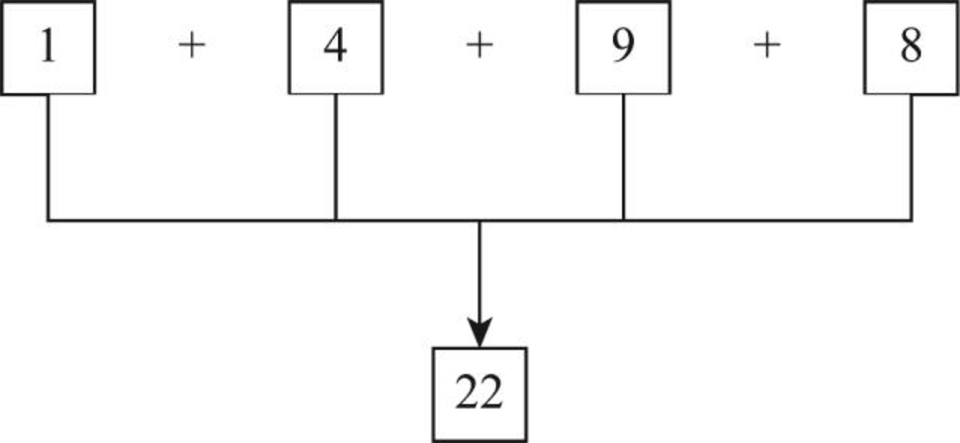
- Step 2: From the above diagram, the sum of digits produces the result as 22.
- Step 3: The unit’s place in the sum represents the check digit. Thus, “2” is in the unit’s place.
- Step 4: Therefore, check digit for the number 1498 is 2.
Additional digit:
- Step 1: In the given number 1498, take the numbers from the odd position from left to right.
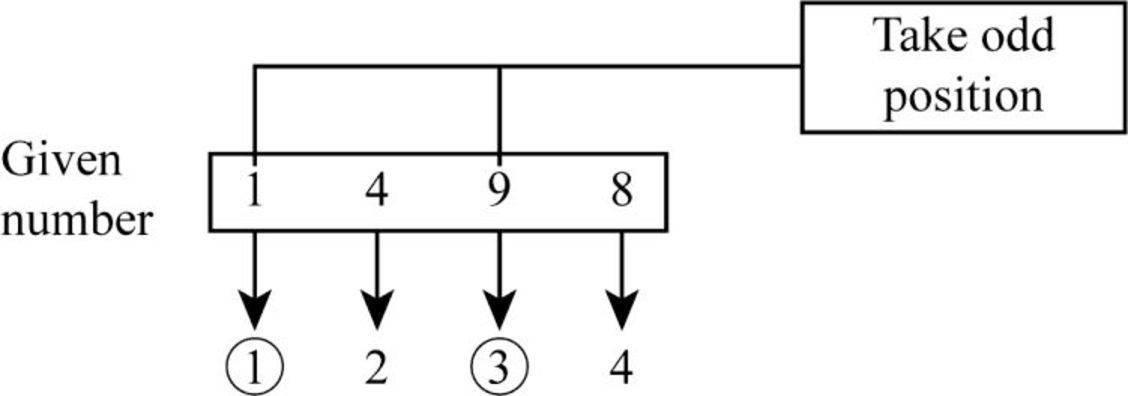
- Step 2: From the above diagram, it is clear that the number “1” on first position and the number “9” on third position are the even position numbers.
- Step 3: The sum of digits produces the result as “10” (1+9 = 10).
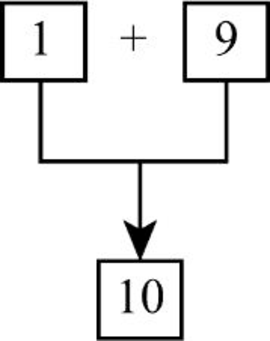
- Step 4: Hence, “0” in the unit’s place is the additional digit used along with the check digit.
Therefore, additional digit used along with the check digit “2” for the number 1498 is “0”.
Explanation of Solution
c.
Find the additional digit using the sum of odd digits for “1668” numbers:
The additional digit (using the sum of odd digits) for the number 1668 can be determined by the following steps:
Check digit:
- Step 1: Count the given number from left to right.
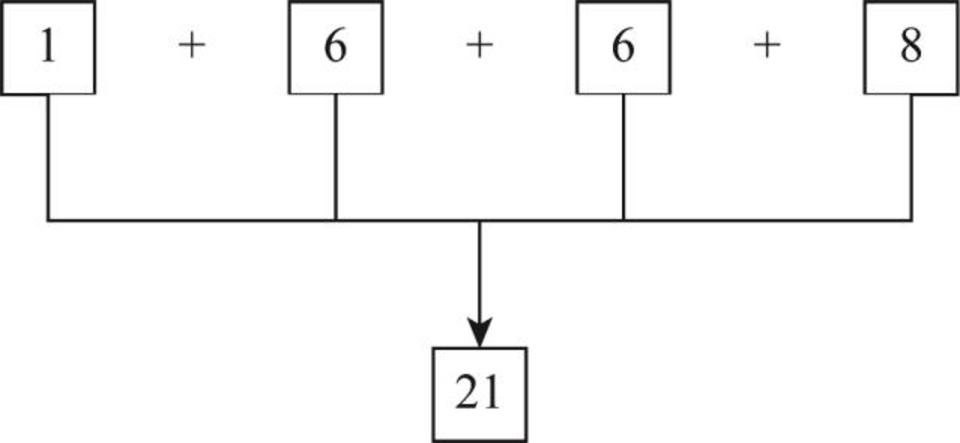
- Step 2: From the above diagram, the sum of digits produces the result as 21.
- Step 3: The unit’s place in the sum represents the check digit. Thus, “1”is in the unit’s place.
- Step 4: Therefore, the check digit for the number 1668 is 1.
Additional digit:
- Step 1: In the given number 1668, take the numbers from the odd position from left to right.
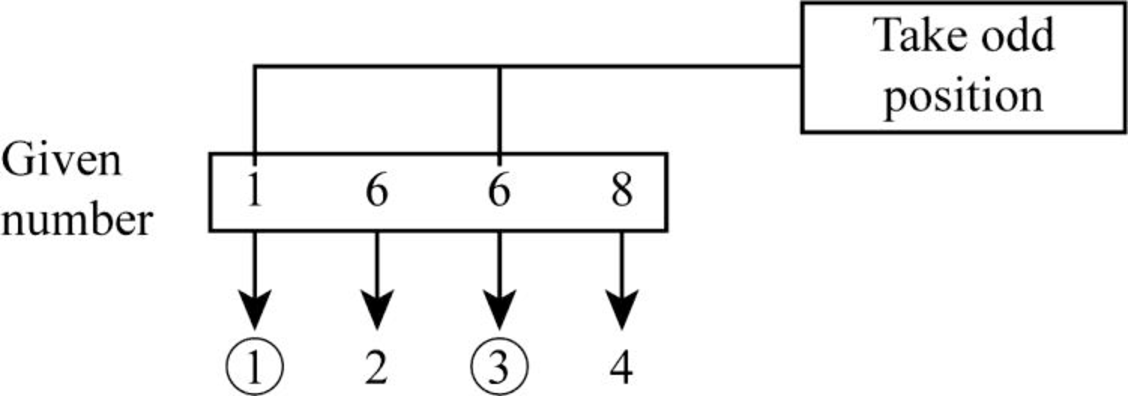
- Step 2: From the above diagram, it is clear that the number “1” on first position and the number “6” on third position are the even position numbers.
- Step 3: The sum of digits produces the result as “7” (1+6 = 7).
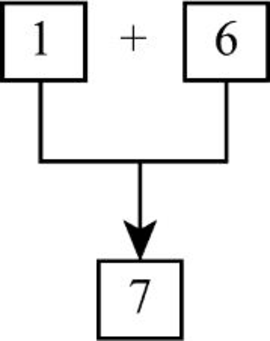
- Step 4: Hence, “7” in the unit’s place is the additional digit used along with the check digit.
Therefore, additional digit used along with the check digit “1” for the number 1668 is “7”.
Explanation of Solution
d.
Find the additional digit using the sum of odd digits for “2001” numbers:
The additional digit (using the sum of odd digits) for the number 2001 can be determined by the following steps:
Check digit:
- Step 1: Count the given number from left to right.
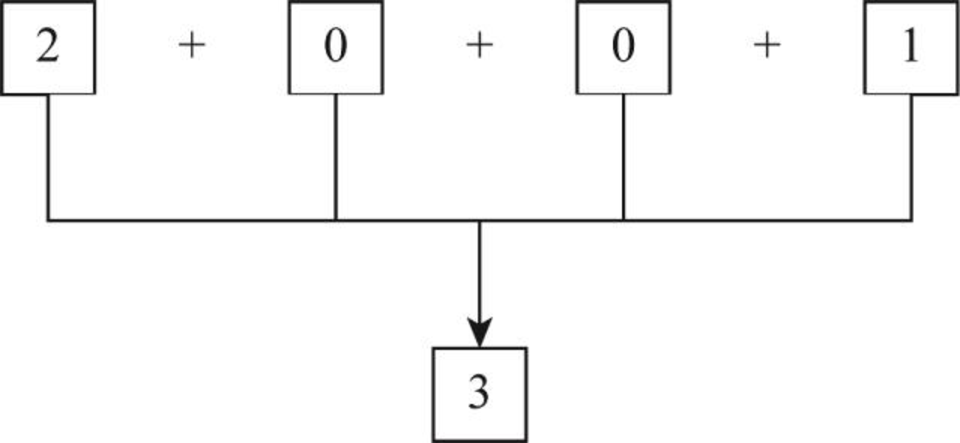
- Step 2: From the above diagram, the sum of digits produces the result as 3.
- Step 3: The unit’s place in the sum represents the check digit. Thus, “3” is in the unit’s place.
- Step 4: Therefore, check digit for the number 2001 is 3.
Additional digit:
- Step 1: In the given number 2001, take the numbers from the odd position from left to right.
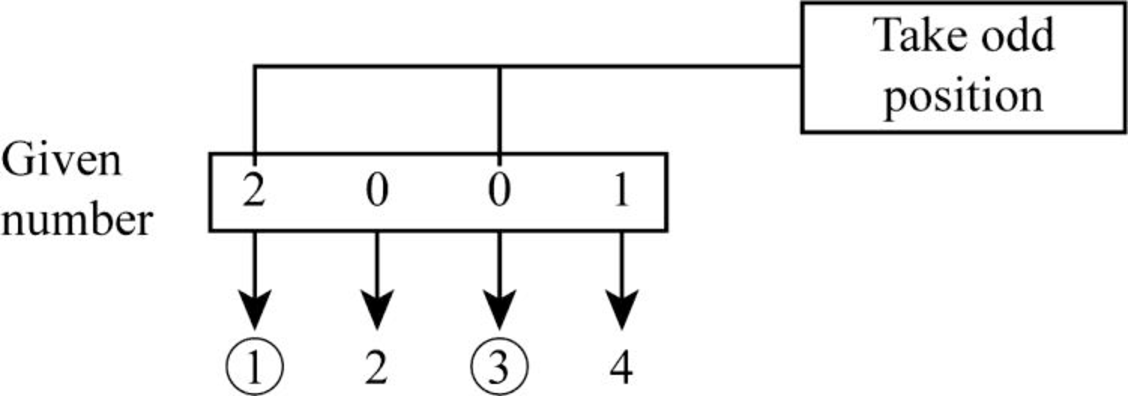
- Step 2: From the above diagram, it is clear that the number “2” on first position and the number “0” on third position are the even position numbers.
- Step3: The sum of digits produces the result as “2” (2+0 = 2).
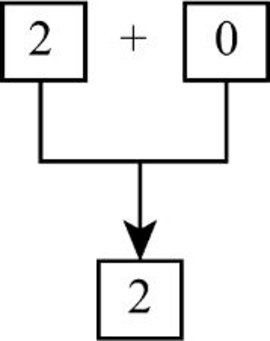
- Step 4: Hence, “2” in the unit’s place is the additional digit used along with the check digit.
Therefore, additional digit used along with the check digit “3” for the number 2001 is “2”.
Explanation of Solution
e.
Find the additional digit using the sum of odd digits for “4040” numbers:
The additional digit (using the sum of odd digits) for the number 4040 can be determined by the following steps:
Check digit:
- Step 1: Count the given number from left to right.
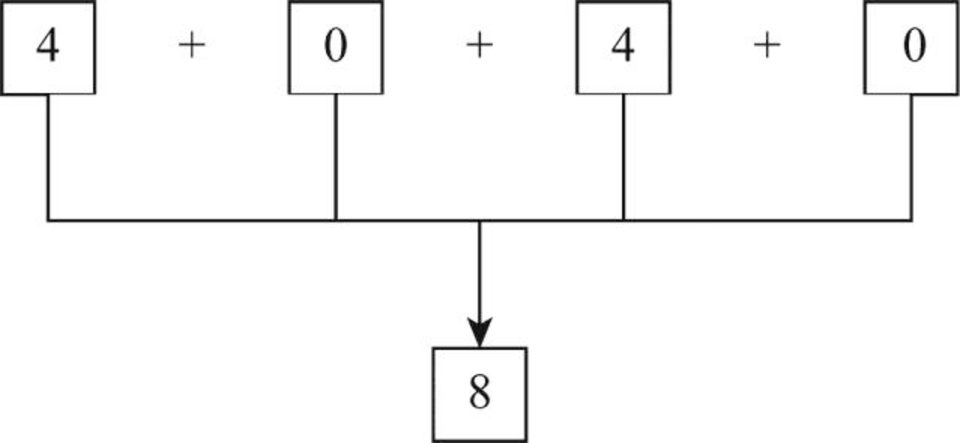
- Step 2: From the above diagram, the sum of digits produces the result as 8.
- Step3: The unit’s place in the sum represents the check digit. Thus, “8” is in the unit’s place.
- Step 4: Therefore, check digit for the number 4040 is 8.
Additional digit:
- Step 1: In the given number 4040, take the numbers from the odd position from left to right.
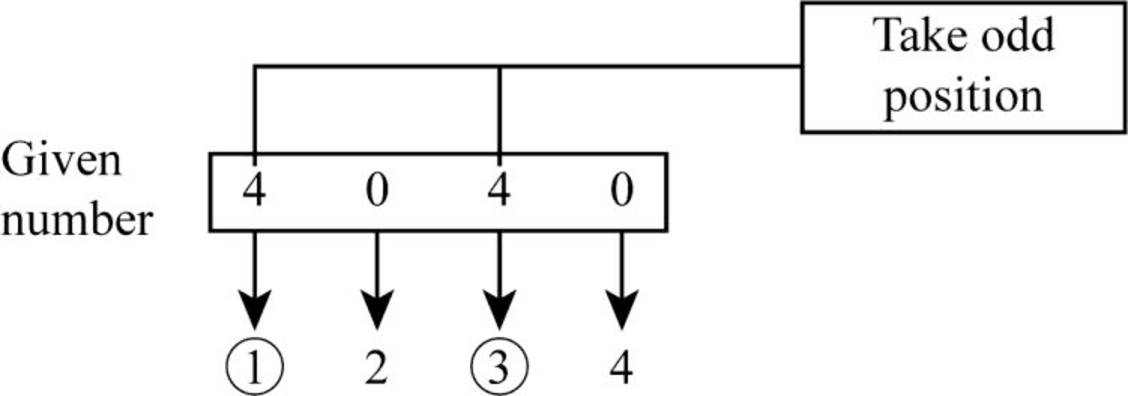
- Step 2: From the above diagram, it is clear that the number “4” on first position and the number “0” on third position are the even position numbers.
- Step3: The sum of digits produces the result as “4” (4+4 = 8).
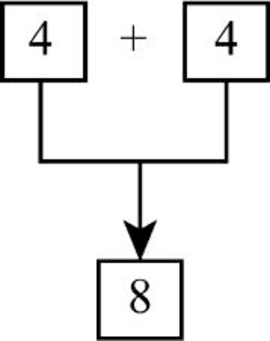
- Step4: Hence, “4” in the unit’s place is the additional digit used along with the check digit.
Therefore, additional digit used along with the check digit “8” for the number 4040 is “8”.
Want to see more full solutions like this?
Chapter 18 Solutions
EBK COMPUTER SCIENCE ILLUMINATED
- In 32-bit MASM, Assume your grocery store sells three types of fruits. Apples, Oranges, and Mangos. Following are the sale numbers for the week (7 days).dataapples dword 42, 47, 52, 63, 74, 34, 73oranges dword 78, 53, 86, 26, 46, 51, 60mangos dword 30, 39, 41, 70, 75, 84, 29Using a single LOOP instruction, write a program to add elements in all these three arrays. Then assign the total result into the eax register. The eax register should have the value 1153 after a successful execution.arrow_forwardYou were given the following negative array. write a program that converts each array element to its positive representation. Then add all these array elements and assign them to the dl register. .data myarr sbyte -5, -6, -7, -4.code ; Write the rest of the program and paste the fully working code in the space below. The dl register should have the value 22 after summing up all elements in the array. Your answer must be in 32-bit MSAM.arrow_forwardImplementation of an Integrated Inventory Management System at Green Fields Manufacturing” Green Fields Manufacturing is a mid-sized company specialising in eco-friendly home and garden products. In recent years, growing demand has exposed the limitations of their fragmented processes and outdated systems. Different departments manage production schedules, raw material requirements, and finished goods inventory using a patchwork of spreadsheets and older software tools. These silos create inconsistent data, errors in stock levels, delivery delays, and customer dissatisfaction. Green Fields plans to implement an Integrated Inventory Management System to centralise production, procurement, inventory, and sales data to address these challenges. This technology aims to provide real-time visibility into stock levels, automate reorder points, and generate analytical dashboards for managers at both operational and strategic levels. Ultimately, the new system will streamline workflows, reduce…arrow_forward
- . Differentiate between continuous and discrete systems. How does their nature affect the selection of simulation techniques?arrow_forwardhi, I need help to resolve the case, thank youarrow_forwardThe following table shows the timestamp and actions by two users. Choose the best option that describes the outcome of the actions. Time JohnSara 10:14 select* from hr.employees; 10:15 Update hr.employees set salary= 100 where employee_id= 206; 10:16 Commit: Select* from hr.employees; 10:18 Commit: 10:20 Select* from hr.employees; Commit: John's query willreturn the same results all three times it is executed as they are run in the same session. John's queries run at10:16 and10:20 produce the same result, which is different from the one at 10:14 John's query run at 10:16 waits until 10:18 to produce results, waiting for the commit to happen. John's queries run at 10:14 and 10:16 produce the same result, which is different from the one at 10:20arrow_forward
- what's the process used to obtain IP configuration using DHCP in Windows Server.arrow_forwardConsider the following sequential circuit: CLOCK a. Define the diagram circuit variables (5 pts) b. Derive the Flip-Flop input equations) (5 pts) c. Derive the circuit output equation (5 pts) d. Derive the state table of the circuit (5 pts) e. Derive the state diagram for this circuit (5 pts) Clk A D B B' CIK Question 2 (25 pts) A sequential circuit with two D flip-flops A and B, two inputs x and y, and one output z is specified by the following next-state and output equations: A(t + 1) = xy' + xB B(t + 1) = xA + xB' z = A a. Draw the logic diagram of the circuit. (5 pts) b. List the state table for the sequential circuit. (10 pts) c. Draw the corresponding state diagram. (10 pts)arrow_forward5. Word FrequencyWrite a program that reads the contents of a text file. The program should create a dictio-nary in which the keys are the individual words found in the file and the values are the number of times each word appears. For example, if the word “the” appears 128 times, the dictionary would contain an element with 'the' as the key and 128 as the value. The program should either display the frequency of each word or create a second file containing a list of each word and its frequency.arrow_forward
- 3.) File Encryption and DecryptionWrite a program that uses a dictionary to assign “codes” to each letter of the alphabet. For example: codes = { ‘A’ : ‘%’, ‘a’ : ‘9’, ‘B’ : ‘@’, ‘b’ : ‘#’, etc . . .}Using this example, the letter A would be assigned the symbol %, the letter a would be assigned the number 9, the letter B would be assigned the symbol @, and so forth. The program should open a specified text file, read its contents, then use the dictionary to write an encrypted version of the file’s contents to a second file. Each character in the second file should contain the code for the corresponding character in the first file. Write a second program that opens an encrypted file and displays its decrypted contents on the screen.arrow_forwardReturns an US standard formatted phone number, in the format of (xxx) xxx-xxxx the AreaCode, Prefix and number being each part in order. Testing Hint: We be exact on the format of the number when testing this method. Make sure you think about how to convert 33 to 033 or numbers like that when setting your string format. Reminder the %02d - requires the length to be 2, with 0 padding at the front if a single digit number is passed in.arrow_forwardThe next problem concerns the following C code: /copy input string x to buf */ void foo (char *x) { char buf [8]; strcpy((char *) buf, x); } void callfoo() { } foo("ZYXWVUTSRQPONMLKJIHGFEDCBA"); Here is the corresponding machine code on a Linux/x86 machine: 0000000000400530 : 400530: 48 83 ec 18 sub $0x18,%rsp 400534: 48 89 fe mov %rdi, %rsi 400537: 48 89 e7 mov %rsp,%rdi 40053a: e8 d1 fe ff ff 40053f: 48 83 c4 18 add callq 400410 $0x18,%rsp 400543: c3 retq 0000000000400544 : 400544: 48 83 ec 08 sub $0x8,%rsp 400548: bf 00 06 40 00 mov $0x400600,%edi 40054d: e8 de ff ff ff callq 400530 400552: 48 83 c4 08 add $0x8,%rsp 400556: c3 This problem tests your understanding of the program stack. Here are some notes to help you work the problem: • strcpy(char *dst, char *src) copies the string at address src (including the terminating '\0' character) to address dst. It does not check the size of the destination buffer. You will need to know the hex values of the following characters:arrow_forward
 Database System ConceptsComputer ScienceISBN:9780078022159Author:Abraham Silberschatz Professor, Henry F. Korth, S. SudarshanPublisher:McGraw-Hill Education
Database System ConceptsComputer ScienceISBN:9780078022159Author:Abraham Silberschatz Professor, Henry F. Korth, S. SudarshanPublisher:McGraw-Hill Education Starting Out with Python (4th Edition)Computer ScienceISBN:9780134444321Author:Tony GaddisPublisher:PEARSON
Starting Out with Python (4th Edition)Computer ScienceISBN:9780134444321Author:Tony GaddisPublisher:PEARSON Digital Fundamentals (11th Edition)Computer ScienceISBN:9780132737968Author:Thomas L. FloydPublisher:PEARSON
Digital Fundamentals (11th Edition)Computer ScienceISBN:9780132737968Author:Thomas L. FloydPublisher:PEARSON C How to Program (8th Edition)Computer ScienceISBN:9780133976892Author:Paul J. Deitel, Harvey DeitelPublisher:PEARSON
C How to Program (8th Edition)Computer ScienceISBN:9780133976892Author:Paul J. Deitel, Harvey DeitelPublisher:PEARSON Database Systems: Design, Implementation, & Manag...Computer ScienceISBN:9781337627900Author:Carlos Coronel, Steven MorrisPublisher:Cengage Learning
Database Systems: Design, Implementation, & Manag...Computer ScienceISBN:9781337627900Author:Carlos Coronel, Steven MorrisPublisher:Cengage Learning Programmable Logic ControllersComputer ScienceISBN:9780073373843Author:Frank D. PetruzellaPublisher:McGraw-Hill Education
Programmable Logic ControllersComputer ScienceISBN:9780073373843Author:Frank D. PetruzellaPublisher:McGraw-Hill Education





